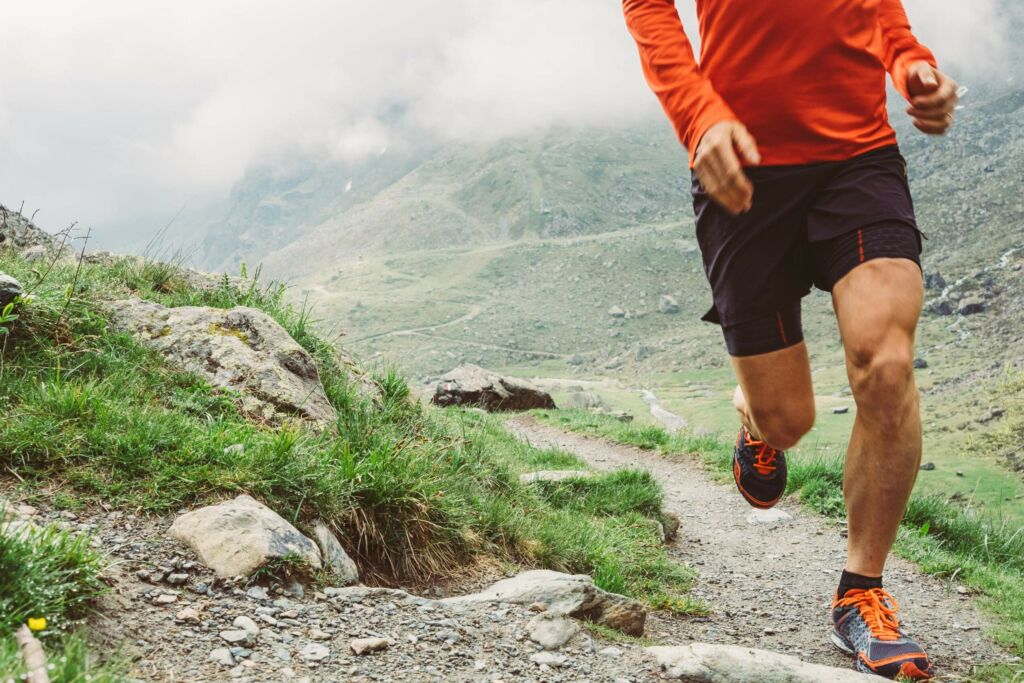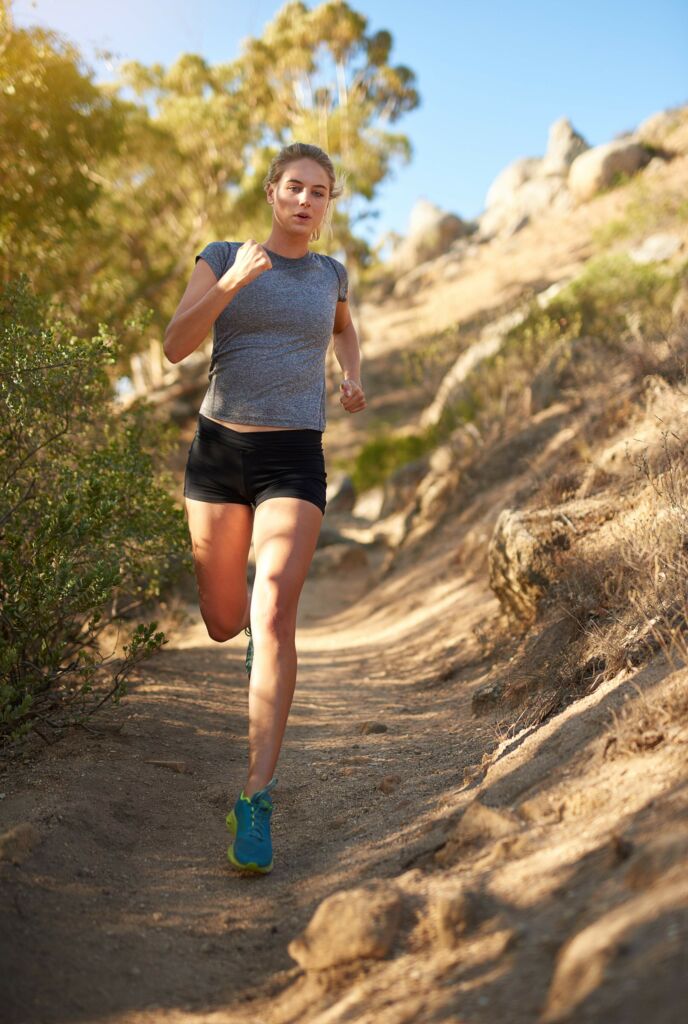As the heat of summer fades into memory, trails throughout the Pacific Northwest call out to runners of all ages and abilities. With the cool air lingering throughout the days and the dust settling as moisture makes its way across the region, it is easy to see why cross-country running is a fall sport, not just in youth athletics but for recreational runners as well. If you haven’t tried trail running, there is no better time than the fall thanks to the beautiful foliage and the serenity trails have can bring.
In addition to the positive mood-boosting effects of running on the trails, trading roads for trails can also boost your physical fitness and strength no matter what level of runner you are.
Trails offer more diverse terrain and uneven ground than roads usually can. This variability works ankle strength, balance and reaction time and usually requires more lateral movements as well, which places more demand on hip musculature – a common area of weakness in runners. Addressing hip strength outside of training on the trail, such as with these 3 moves beyond the basic clamshell, is a great way to avoid injury as a runner.
Another benefit of trail running is the elevation changes that come with it. Both uphill and downhill running place stress on our bodies in different ways.

UPHILL TRAIL RUNNING
Uphill running can be more demanding on the cardiovascular system, thus strengthening your heart and lungs and increasing overall fitness.
Leg muscles also have to work harder to drive your body uphill, leading to improved leg strength and endurance and I often consider hills to be part strength training for runners because of this. Finally, uphill running is very useful for improving running form as we naturally tend to lean forward more on the uphill, allowing for more glute muscle engagement and better foot placement under our center of gravity instead of out in front of the body.
DOWNHILL TRAIL RUNNING
Downhill running can be a little trickier and is often blamed for knee pain while running.

A big contributor to this is that it is very easy to “stride out” when running downhill, meaning taking too long of steps. This can lead to increased heel striking and harder impact, which can increase strain on the knees.
To mitigate this, resist the urge to lean back, which only slows you down and increases the strain on the knees and thigh muscles. Stick to a slight forward lean and keep your center of gravity over your legs.
Compared to running on flat surfaces, running downhill requires more eccentric work from the quadriceps, meaning the muscles are working as they lengthen. These contractions can cause different stress on the thigh muscles than they are used to, which can increase muscle soreness after hill running. Although that muscle soreness is uncomfortable, as the muscles rest and recover after a run, they build back stronger.
3 tips for first-time trail runners:
- Ditch the watch… or at least don’t run by it. Your pace will vary more when trail running than when running on flat roads, and that is okay! Pace yourself uphill and let gravity give you a little assist on the downhill.
- Find a fun trail. I always enjoy finding new running trails near me. There are various apps and interactive maps to help you discover your new favorite route.
- Don’t forget the dynamic warm-up before you run to increase blood flow, mobility and prep your joints and muscle for running. Then, don’t skip your cool down to decrease muscle soreness and recovery time. Try foam rolling after a long trail run!
While most runners could benefit from more strength training in their weekly routine, here are a few more of my favorite exercises to improve your trail running and prevent injuries.
Happy running!

Start your physical therapy journey today.
As physical therapists, we know the importance of movement for overall health and well-being. From injury recovery to achieving optimal performance, our passion is to help every patient reach their goals and live an active, pain-free life. Get started with PT today!

